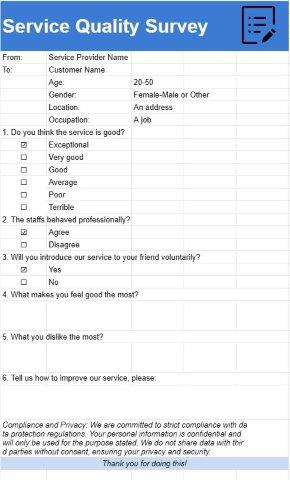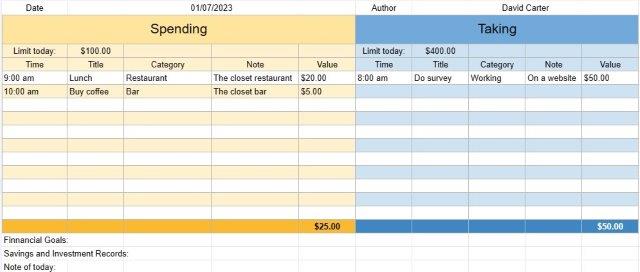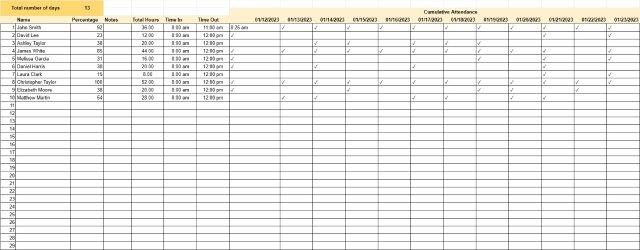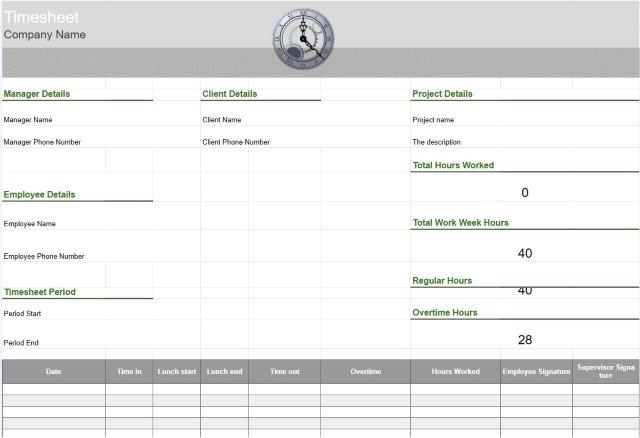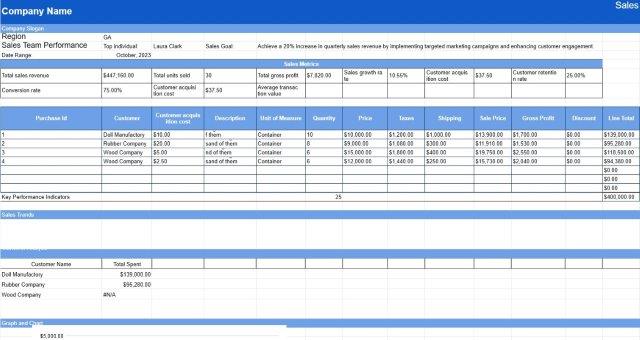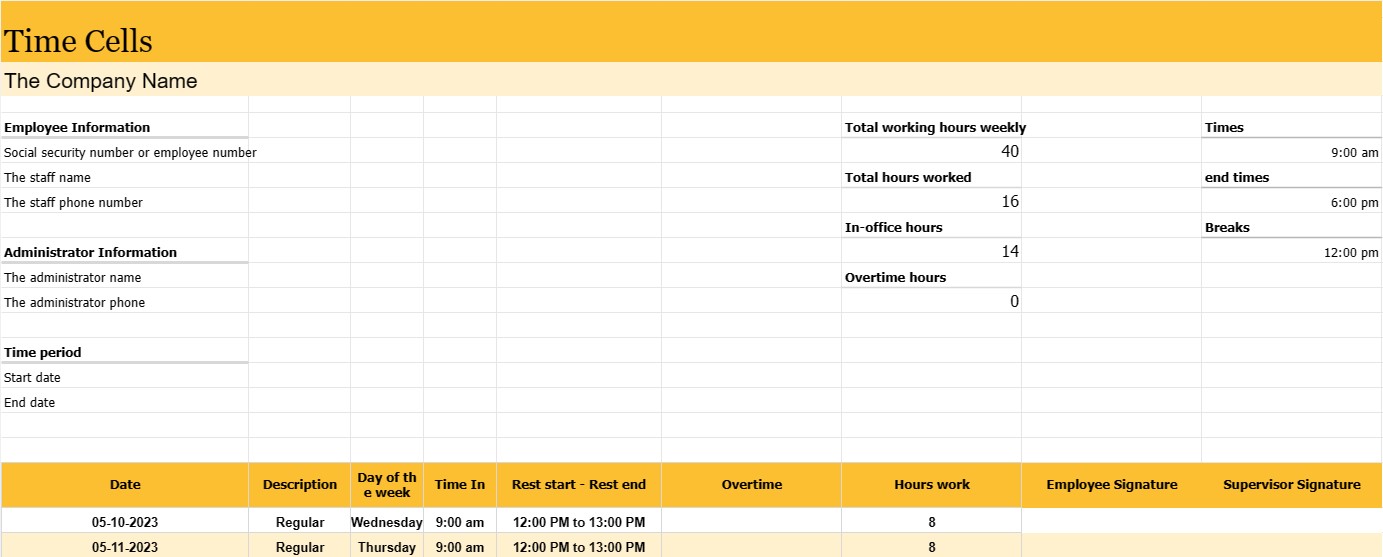

タイムセル
カテゴリー : トラッカー
マネージャーはこれを使用して従業員を管理する必要があり、これにより従業員をより注意深く追跡できるようになります。
タイムレポートは、特定の期間(通常は週の労働時間または給与期間)にわたる従業員の時間を追跡するために使用される記録または文書です。これは、従業員の勤怠状況の追跡と管理、給与の計算、労働法や会社のポリシーへの遵守の確保に不可欠なツールです。
従業員レポートは、企業、政府機関、組織など、さまざまな業界や職場で一般的に使用されています。
通常、従業員の雇用日誌に記載される最も重要な部分と情報は次のとおりです。
- 従業員情報: 従業員の名前、および場合によっては社会保障番号または従業員番号。
- 期間: タイムシートの対象となる特定の期間。週、隔月、または月ごとの支払い期間。日付: 指定された期間内の各営業日の日付。
- 曜日: 各日付に対応する曜日 (月曜日、火曜日など) .
- 時刻と終了時刻: 従業員が各勤務日のシフトを開始および終了する正確な時刻。通常、この情報は時間と分で保存されます。
- 休憩: 従業員の休憩時間(該当する場合)。食事休憩と休憩の開始時間と終了時間も含まれます。総労働時間: 各就業日の従業員の総労働時間と全期間の累計。
- 残業: 従業員が残業した場合 (通常は時間として定義されます)通常の労働週または労働日を超える場合)、それらは個別に報告されます。
- 従業員と監督者の署名: 多くのタイムシートには、従業員と監督者が署名して記録された時間が正確であることを確認するためのスペースが含まれています。
従業員ニュースレターは、いくつかの重要な目的を果たします。
- 給与: これらは、定期賃金、残業代、付帯手当など、従業員の賃金を計算するための基礎となります。
- 労働コンプライアンス: タイムシートは、組織が労働法や規制、特に残業代や上限時間に関連する規制を遵守するのに役立ちます。
- 勤怠管理: 従業員の出欠と時間厳守を監視し、パフォーマンス評価や勤怠管理に役立ちます。
- プロジェクトとタスクの追跡: 場合によっては、時間を割り当てるためにタイムシートが使用されます。
- 記録: タイムシートは従業員の労働時間の履歴記録を作成します。これは監査にとって重要になる可能性があります。法的要件と人事記録。
- リソース計画: タイムシートは、従業員の可用性と仕事量に関する情報を提供することで、企業がリソースを計画し、割り当てるのに役立ちます。
一部の組織は従来の紙ベースのタイムシートを使用し続けていますが、多くの企業は、より高い精度、利便性、効率性を提供する電子時間管理システムに移行しています。電子システムは、労働時間を自動的に計算し、時間外労働の計算を処理し、レポートを生成することで、給与計算を簡素化し、エラーの可能性を減らします。
スプレッドシートのテンプレートを簡単にプレビューしてダウンロード
制限なしでスプレッドシート テンプレートのフル バージョンを表示して気に入るかどうかを確認し、Excel テンプレートをダウンロードしてデバイスに保存し、無料で使用できます。
どこからでもスプレッドシート テンプレートにアクセス
これは、Windows、MacOS、Linux、iOS などのすべての一般的なオペレーティング システムで動作します。スプレッドシート テンプレートを表示し、追加のプログラムを必要とせずにダウンロードできます。
テンプレートの使用方法
非常に簡単な手順に従って、スプレッドシート テンプレートをプレビュー、ダウンロード、使用する方法を理解します。
1
請求書、予算、カレンダー、その他のプランナー、その他のトラッカーなどのカテゴリを選択し、スプレッドシート テンプレートをクリックしてオンラインで表示します
2
スプレッドシート テンプレートをプレビューした後、目的に合っていると思われるものをダウンロードできます
3
1 回デバイス上にファイルがある場合は、そのファイルにデータを入力するか、ユースケースに合わせて変更するだけです
4
スプレッドシート テンプレートの作成が完了したら、選択した方法で使用できます
さらに類似したテンプレート
選択したものと同じカテゴリにあるスプレッドシート テンプレートをさらに表示します。



